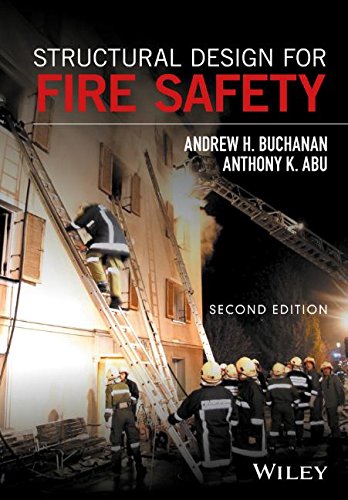

Most ebook files are in PDF format, so you can easily read them using various software such as Foxit Reader or directly on the Google Chrome browser.
Some ebook files are released by publishers in other formats such as .awz, .mobi, .epub, .fb2, etc. You may need to install specific software to read these formats on mobile/PC, such as Calibre.
Please read the tutorial at this link: https://ebookbell.com/faq
We offer FREE conversion to the popular formats you request; however, this may take some time. Therefore, right after payment, please email us, and we will try to provide the service as quickly as possible.
For some exceptional file formats or broken links (if any), please refrain from opening any disputes. Instead, email us first, and we will try to assist within a maximum of 6 hours.
EbookBell Team

4.3
38 reviewsStructural Design for Fire Safety, 2nd edition
Andrew H. Buchanan, University of Canterbury, New Zealand
Anthony K. Abu, University of Canterbury, New Zealand
A practical and informative guide to structural fire engineering
This book presents a comprehensive overview of structural fire engineering. An update on the first edition, the book describes new developments in the past ten years, including advanced calculation methods and computer programs. Further additions include: calculation methods for membrane action in floor slabs exposed to fires; a chapter on composite steel-concrete construction; and case studies of structural collapses.
The book begins with an introduction to fire safety in buildings, from fire growth and development to the devastating effects of severe fires on large building structures. Methods of calculating fire severity and fire resistance are then described in detail, together with both simple and advanced methods for assessing and designing for structural fire safety in buildings constructed from structural steel, reinforced concrete, or structural timber.
Structural Design for Fire Safety, 2nd edition bridges the information gap between fire safety engineers, structural engineers and building officials, and it will be useful for many others including architects, code writers, building designers, and firefighters.
Key features:
• Updated references to current research, as well as new end-of-chapter questions and worked examples.
•Authors experienced in teaching, researching, and applying structural fire engineering in real buildings.
• A focus on basic principles rather than specific building code requirements, for an international audience.
An essential guide for structural engineers who wish to improve their understanding of buildings exposed to severe fires and an ideal textbook for introductory or advanced courses in structural fire engineering.